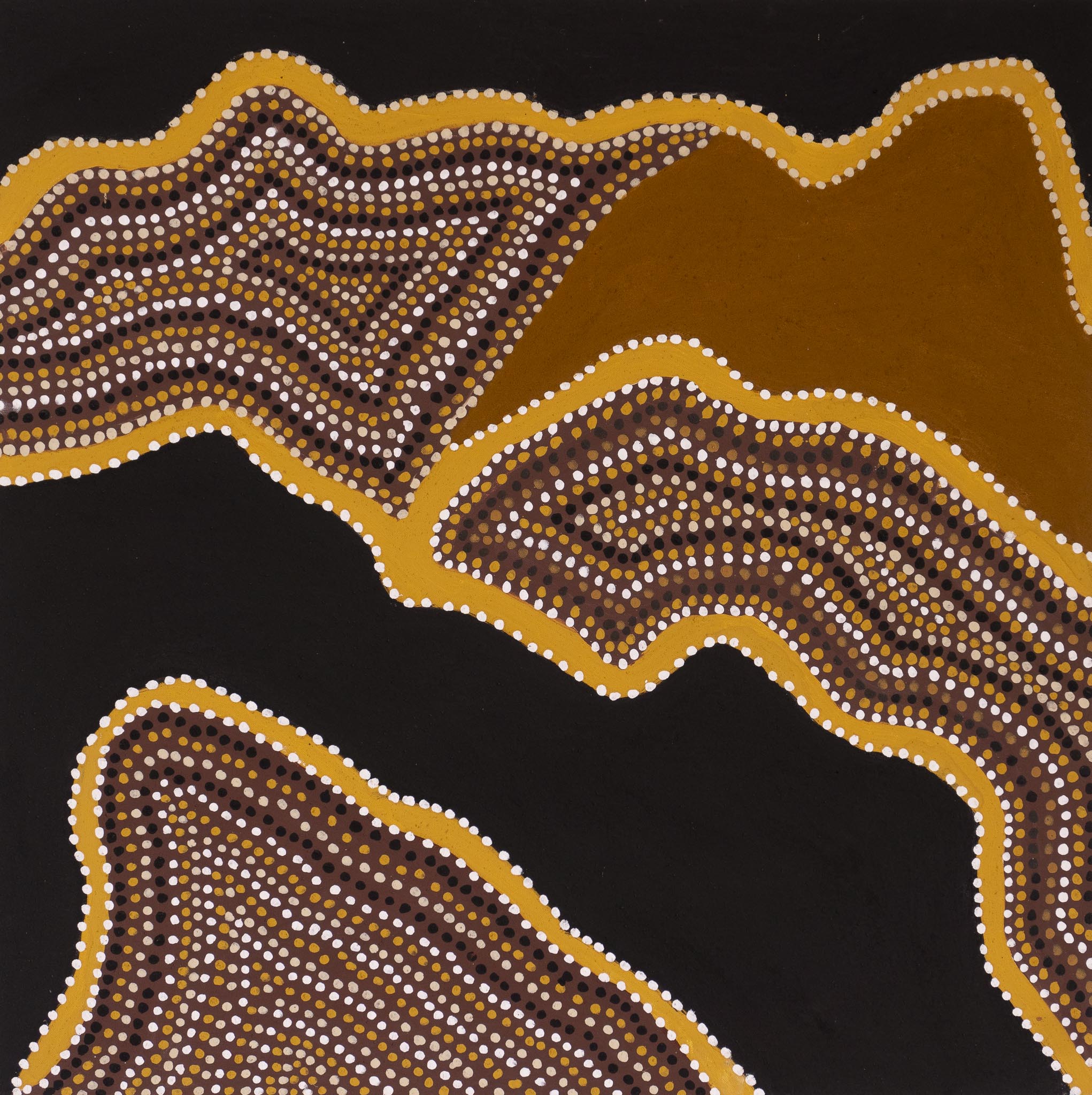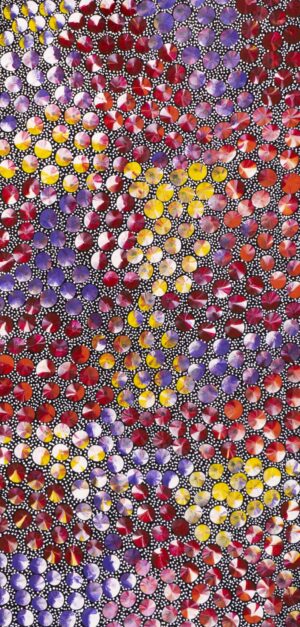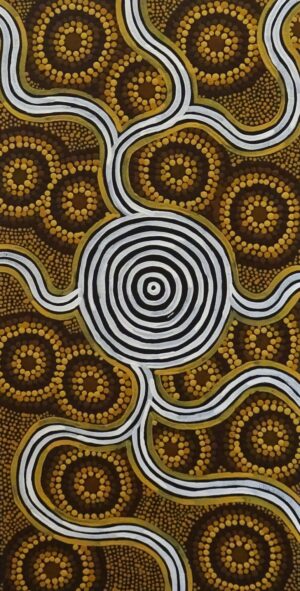Scroll & click the images below to view this artwork in different rooms & settings.
- On a tablet or mobile, click the “view in your room” button, point your camera at the wall you wish to see the artwork on. It will appear to scale on the wall, when viewed through your device.
- On a desktop/laptop, click the same button & scan the QR code using a mobile device to view the artwork on your wall instantly.
- Use 1 finger to move artwork to desired spot. If it disappears, close, go back & click “view in your room” button again. To resize art, pinch to zoom with 2 fingers.
Requires compatible Apple iOS 13 or Android with ARCore 1.9+
Madigan Thomas / Sugarbag Country
SKU: 11834
90cm x 90cm Ochre on Canvas, 2007
View more from artist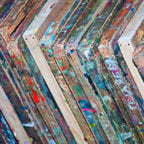

$4,500.00
90cm x 90cm Ochre on Canvas, 2007
(Sold)
How Artworks Are Sent
Ochre / Kimberley artworks are shipped on canvas or linen, already stretched, ready to hang unless stated otherwise.
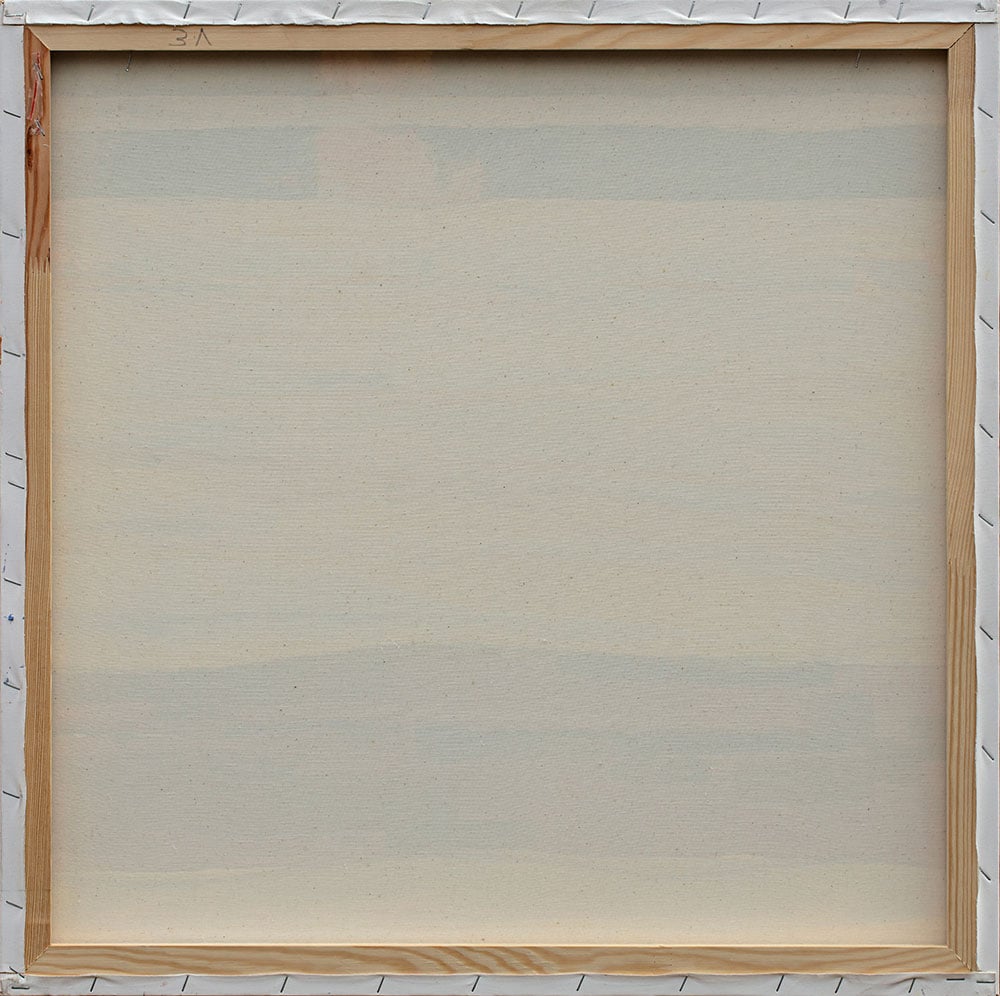
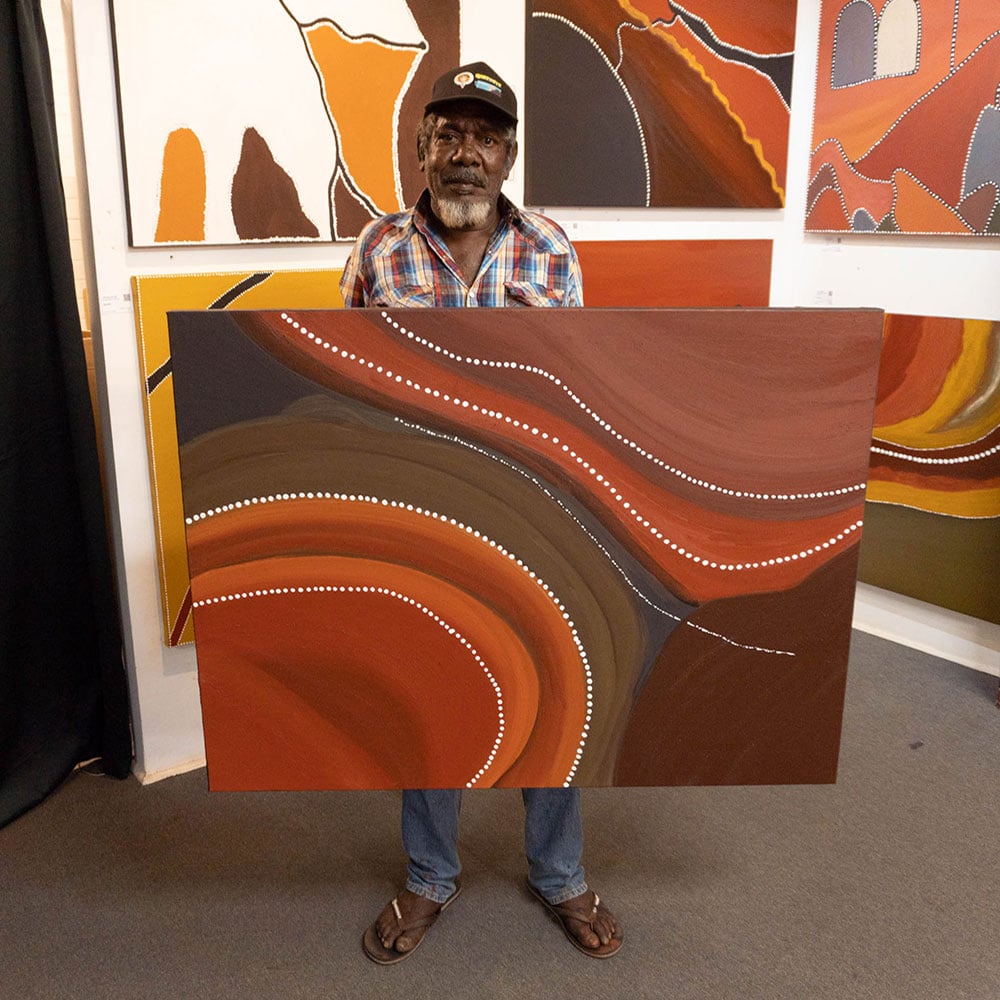
Acrylic artworks are shipped on canvas or linen un-stretched, rolled up in a cardboard tube unless stated otherwise.
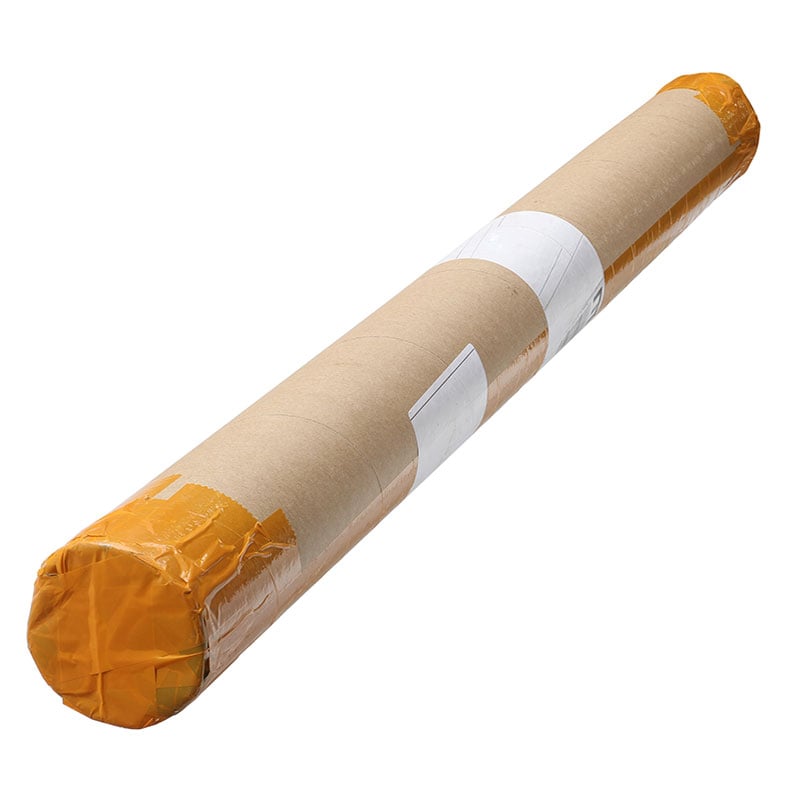
These artworks will need to be stretched on a stretcher board before hanging.
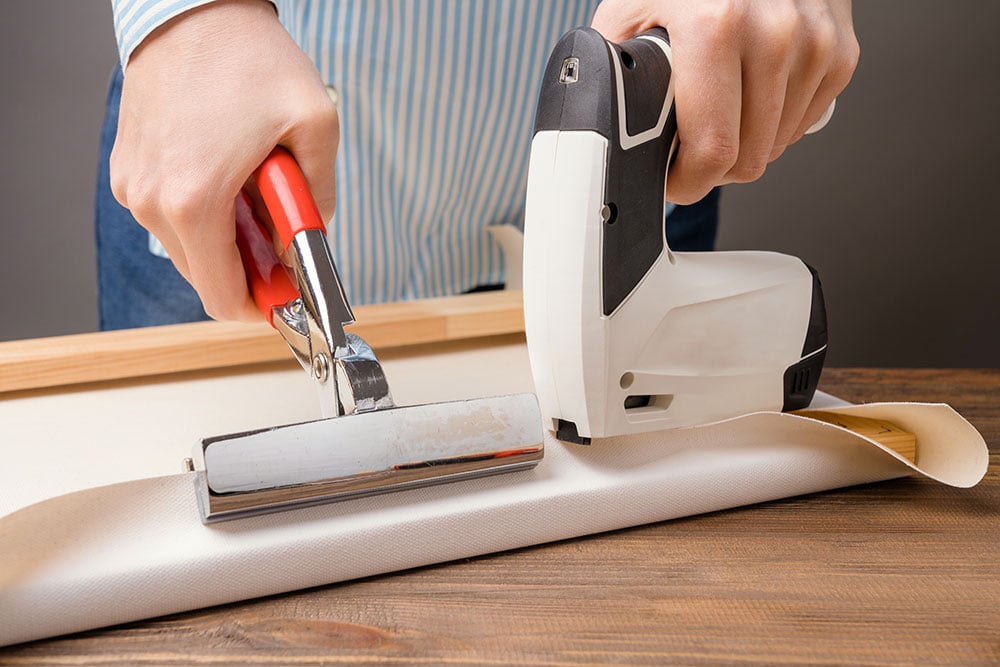
This can be done by nearly any picture framer (highly recommended) or you can DIY if you’re confident in your handiwork.
There are numerous "how to" videos on YouTube showing you how to achieve this.
Artist Profile
c.1932 – 2011
Madigan Thomas was born c. 1932 on Violet Valley Station just south of Warmun. As a child, she assisted the women with yard and domestic duties around the station, and learnt from her elders the very depths of her culture which remained with her for the rest of her life.
On moving to reside on Mabel Downs Station after Violet Valley became an outstation (her son Bruce has now converted Violet Valley (Baulah-Wah) back to a working cattle station), she assisted her stockman husband Sandy (who passed away in late 2009). Madigan rode with the men, mustered the cattle and undoubtedly kept up with the best.
She educated her children whilst living in Wyndham and gave them the benefit of higher education – demonstrating how astute this lady is – she knew the importance of this and her children have succeeded, with Ethel becoming a teacher and later C.E.O. of Warmun Community, her son was the former Chairperson of Warmun Community, her eldest daughter, Shirley Purdie, a famous artist in her mother’s footsteps, and in turn Madigan’s grandchildren are succeeding in their chosen professions.
Madigan and Sandy’s community was Violet Valley, her home country – and, whilst living at Warmun Community with Shirley, spent as much time as possible at Violet Valley. When Madigan painted her home country, the works were invariably softer than her often strong style, and one can only assume that here is where she relaxed.
She was a strong woman who spoke her mind freely and directly and believed in her Traditional woman’s law, particularly in relation to young girls. Madigan demanded respect and it was given freely to this wonderful lady. The 1970’s saw the establishment of the women’s painting movement championed by Queenie McKenzie and Madigan Thomas. These two women are mentioned very often in the same context as Rover Thomas and Jack Britten.
Madigan’s style was wide and varied – from delicately dotted landscapes to vivid black lines of the open cut diamond mine on the Women’s Sacred Site, to extremely clever sketch paintings of animals – like Jack Britten and all great artists, Madigan can sketch Kartiya (whiteman) style.
It has been written that Madigan’s style of painting was characterised by various pathways and dreaming tracks that meander through the painting. To view the paintings aesthetically they are flowing, sometimes simplistic and sometimes detailed; however, they invariably portray or show the whole story.
Madigan participated in many exhibitions and was a finalist in the 1994 National Aboriginal Art Award, her paintings are much sought after and she was never seen to produce anything other than a really excellent piece of art. Madigan is considered by many experts as one of the most important contemporary painters of our time.
Madigan was the epitome of a strong Kitja Law woman. She passed away in August 2011 and was laid to rest next to her husband Sandy on her beloved community of Violet Valley.
SELECTED EXHIBITIONS
1994
– Finalist Eleventh National Aboriginal Art Award Exhibition, Museum and Art Gallery of the Northern Territory, Darwin.
1995
– Paintings by Warmun Women, Kingston, A.C.T.
– Paintings by Warmun Women, AGOG, Canberra
1996
– Figures in the Land, National Gallery of Victoria, Melbourne
2001
– Kintolai Gallery, Adelaide
2003
– True Stories, Art of the East Kimberley, Art Gallery of NSW
– Framed Gallery, Darwin
2004
– Woolooongabba Gallery, Brisbane
2005
– Flinders Lane Gallery, Melbourne
2007
– Solo Exhibition, Seva Frangos Art, Perth
SELECTED COLLECTIONS
– Parliament House Collection
– Art Gallery of New South Wales
– Art Gallery of Western Australia
– Darwin Museum and Art Gallery
– Prestigious Private and Corporate Collections within Australia and world-wide.
BIBLIOGRAPHY
– S. McCulloch, Contemporary Aboriginal Art, A guide to the rebirth of an ancient Culture – Allen & Unwin 1999
– Digging Stick to Writing Sticks, Stories of Kitja Women
Artist's Description
This country is around Nine Mile, Norton Bore. It’s the place where we can find the biggest lot of Sugarbag (wild honey). Our people have always gone there to get that Sugarbag. One day, my daughter Shirley took me there – and we were getting that honey, and Shirley looked under a big tree which had been pushed over with the wind. Well, the biggest mob of sugarbag we have ever seen was there. We were filling up everything we had to take that sugarbag back with us. No grass growing there ever, and salty in the wet. It’s the salt that stops the grass growing. No good for feed for cattle. Not much good for anything really. Sometimes we find Binkirrbal (bush turkey) around there, and sometimes kangaroo. Mostly find them up top.
(When Madigan says “not good for anything really” she is referring to the fact that the land in the East Kimberley was originally under sea water. The salt level is very high. The Sugarbag Country in the region consists of salt pans and the country is not able to sustain pasture).
Shipping, Returns & Exchanges
Shipping & Insurance is 100% Free Worldwide
Note: Some countries & local jurisdictions may charge import customs fees. Please check with your local customs office. Free shipping does not include any additional import duties, taxes or fees.
Guarantee & Refunds:All artworks come with a 30-day 100% money back guarantee.
If, for whatever reason, on delivery of your artwork(s), you are not satisfied with your acquisition, you may return the artworks(s) for a full refund of the purchase price.
When requesting a refund all return shipping charges are to be borne by the customer and as all goods are the responsibility of the customer until they are received by us, we highly recommend that you insure the goods to be returned to the value of the purchase price.
This can usually be done easily through your local postage service or courier.
Exchanges:The Artlandish 30-day exchange program means you may also swap your artwork(s) with something else up to the value of the originally purchased painting(s).
Simply notify Artlandish within 30 days of receiving your artwork that you wish to exchange it for another piece and then return the artwork to be exchanged.
The new artwork(s) chosen via exchange also enjoy Free worldwide shipping! You will only have to cover the return shipping costs of the artwork you wish to exchange.
If you have any other questions or concerns , please don't hesitate to contact us at any time.
For more information and full details please see our refunds and returns policy page , money back guarantee page and our shipping page
